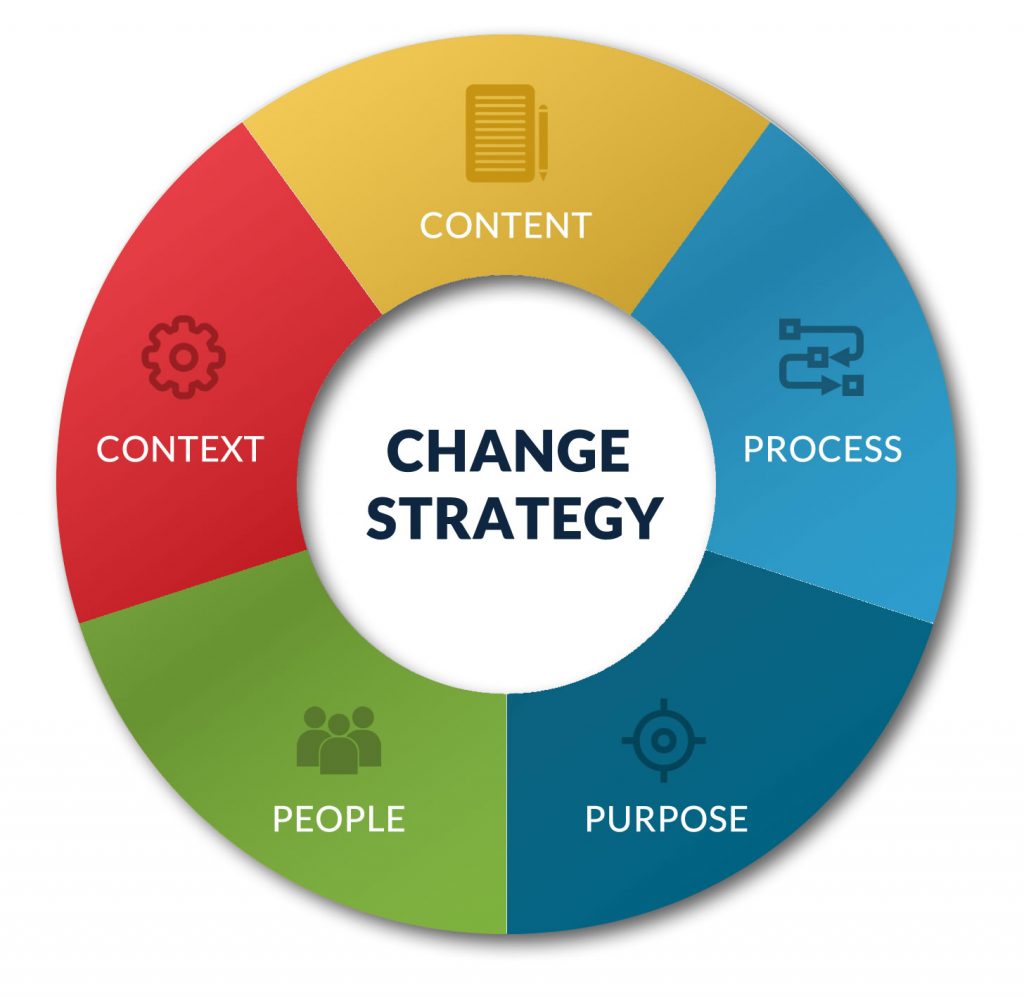Successful Strategic Change
Strategic Change is the movement of a company away from its present state toward some desired future state to increase its competitive advantage. It is an approach to congruence among the organization’s strategy structure, human resource systems, and the larger environment. Strategic change requires the management’s attention to an organization’s technical, cultural, and political aspects.
Three types of Strategic Changes
- Restructuring
- Reengineering
- Innovation
Restructuring
Managers often choose ‘restructuring’ of the organisation to implement strategic change. This they’d to improve performance.
Research imply that environment is an important determinant of organisation structure which is also subject to the ‘by-plays of interpersonal power and politics.’ In practice, the appropriateness of organisational structure is determined by situations. Implementing strategic change requires a complete deviation from the traditional structure and a switchover to a dynamic design capable of dealing with the requirements of a constantly changing environment. Changing organisation structure alone, however, may not yield the desired results; changes need to be made in many other aspects of the organisation, such as information systems, human resource policies, and corporate culture.
These changes should be made in such a way that they support the transition from the old to the new paradigm. And the overall efficacy of the changes depends on how far senior managers of the organisation lend their active support and participation.
Reengineering
In reengineering, the managers focus on the ‘business processes rather than on ‘business functions.’ What is done in reengineering is that managers radically redesign the business processes.
The objective is to reduce costs, improve quality, bring superior service, and achieve dramatic improvements in speed (of doing things throughout the organisation).
A business process, such as product designing or inventory control, requires cross-functional coordination for success.
Innovation
Innovation is primarily an improvement over existing products or services. Thus, innovation requires extensive research and development efforts. Innovation implies that organisations use their existing skills, competencies, and resources to create new goods, services, or technology. This is what organisations do to better respond to the customers’ needs.
Innovation may be wonderful in achieving spectacular success, but it may lead to disaster if the research and development efforts fail to bring desired results. Although innovation involves high risks, it has the greatest prospects for long-term success.

